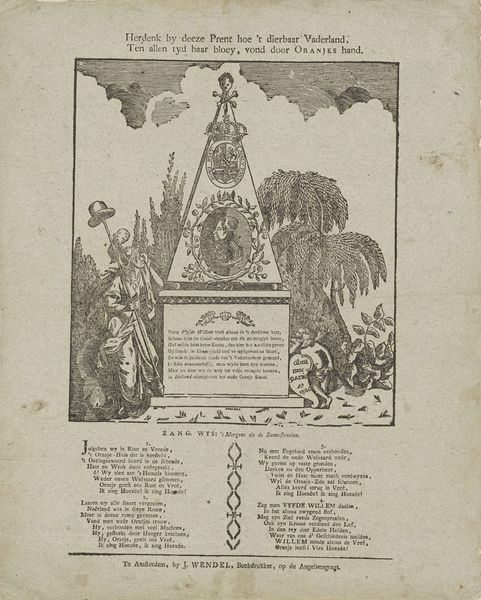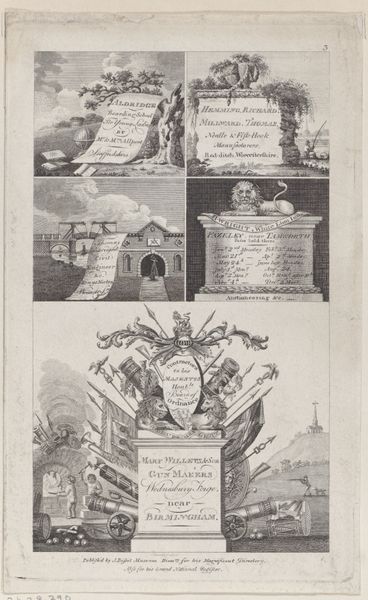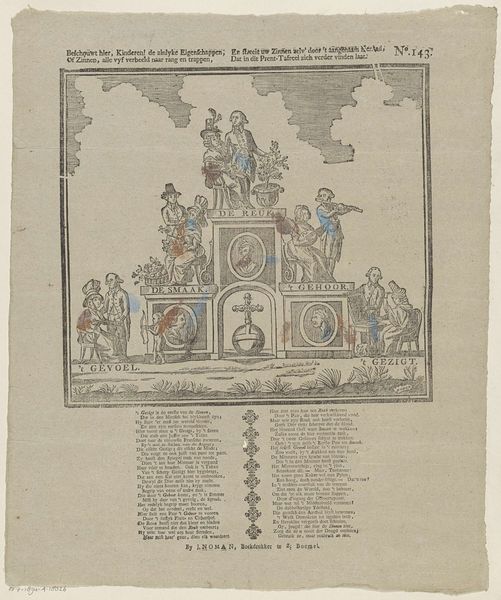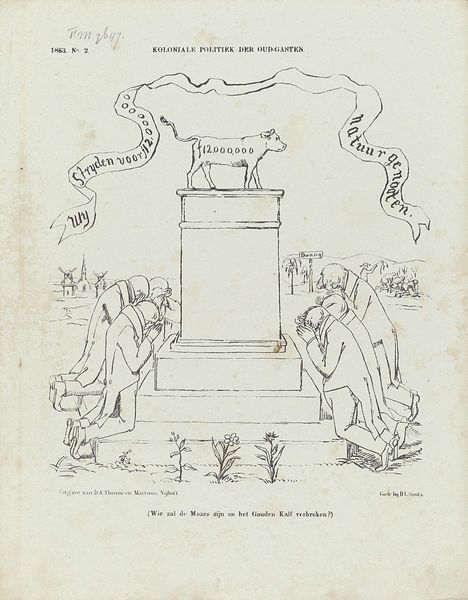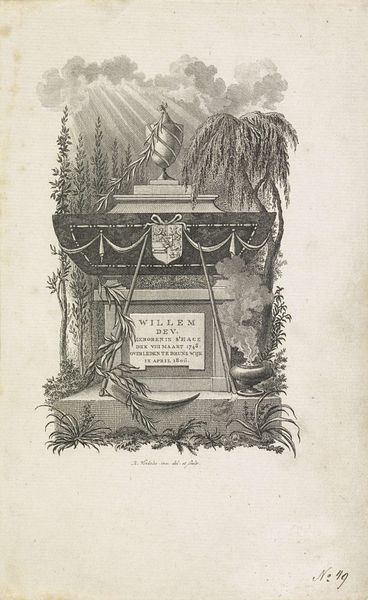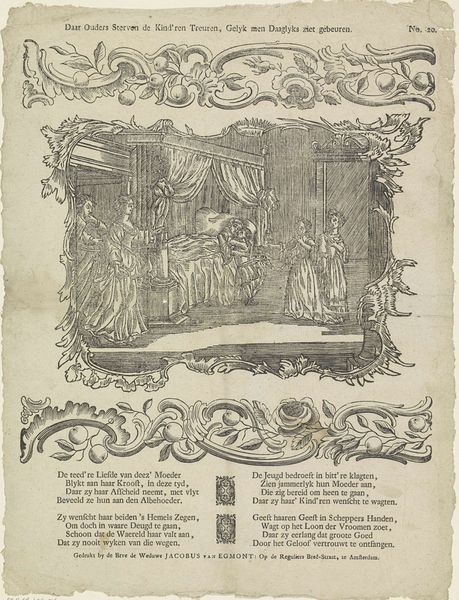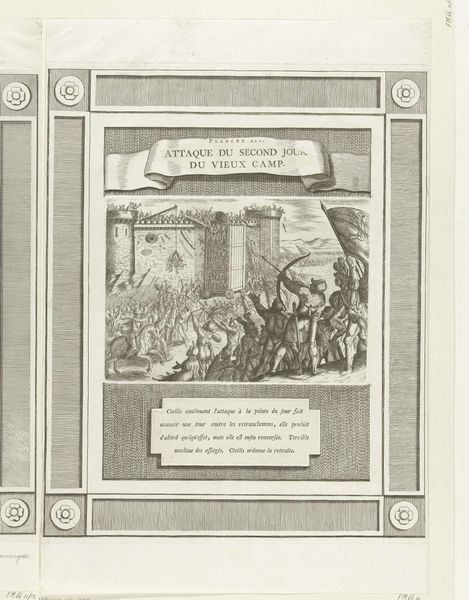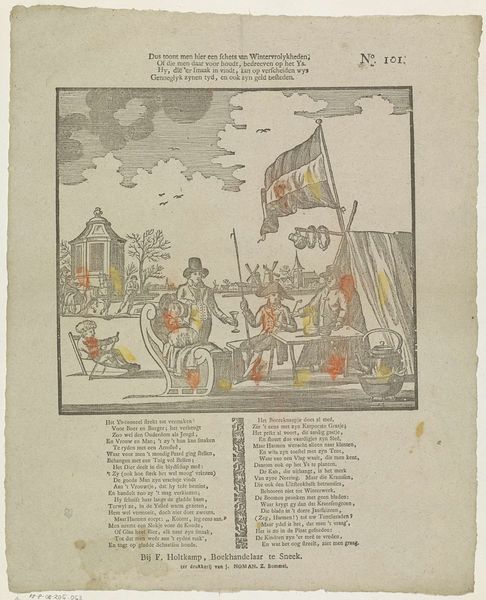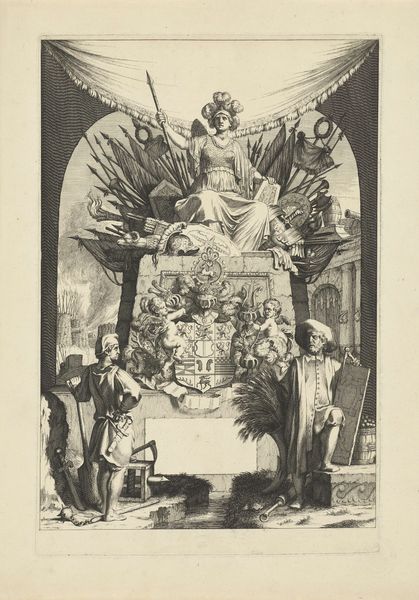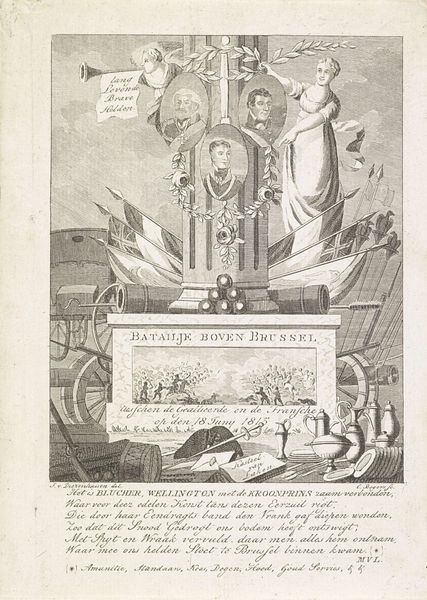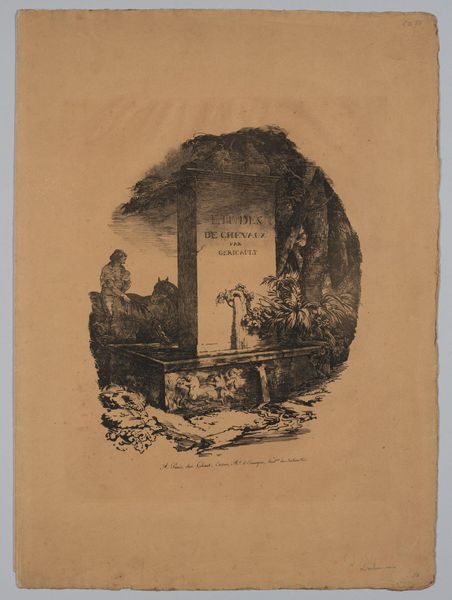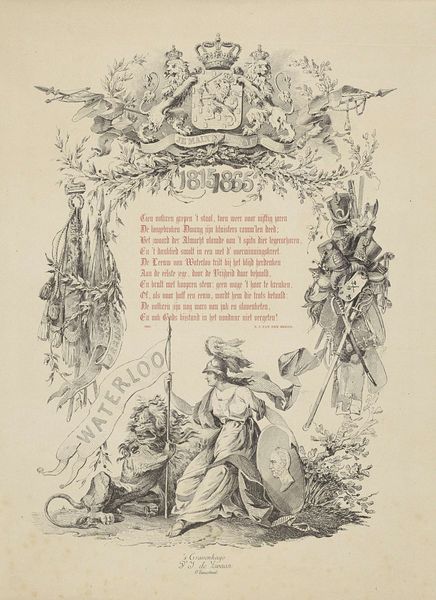
Afbeelding der graf-tombe van zyne doorluchtige hoogheid, overleeden / te Brunswyk, den 9 april 1806 1806
0:00
0:00
print, engraving
#
portrait
#
neoclacissism
# print
#
history-painting
#
engraving
Dimensions: height 407 mm, width 334 mm
Copyright: Rijks Museum: Open Domain
This print depicting the tomb of William V was made in Amsterdam, likely shortly after his death in 1806. The image presents a memorial topped by royal symbols of the House of Orange. But let's consider the context: William V, the last Stadtholder of the Dutch Republic, had died in exile after fleeing the Netherlands due to the Batavian Revolution, which was inspired by the French Revolution. This print, produced in Amsterdam, raises questions about its intended audience and message. Was it a genuine expression of grief, or a more complex statement about Dutch identity and the lost political order? Was it an institutional piece? The publisher's address printed on the bottom tells us that this image was likely intended for mass consumption. To understand this image fully, we must consider the political climate of the time, researching the history of the Dutch Republic, the impact of the French Revolution, and the role of the House of Orange. Only then can we understand the nuanced layers of meaning embedded within this seemingly simple memorial print.
Comments
No comments
Be the first to comment and join the conversation on the ultimate creative platform.
